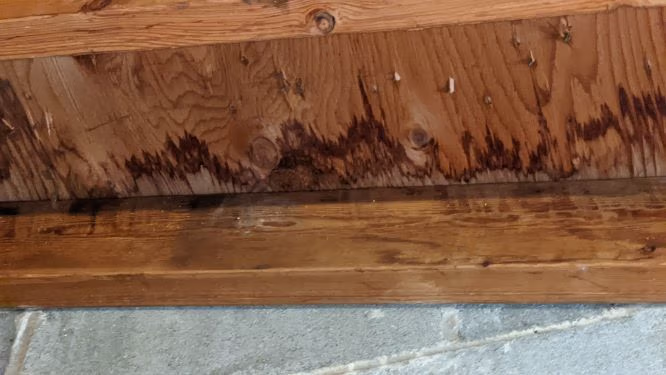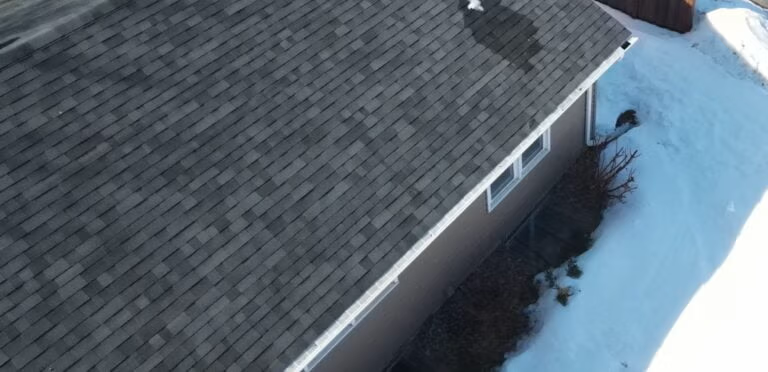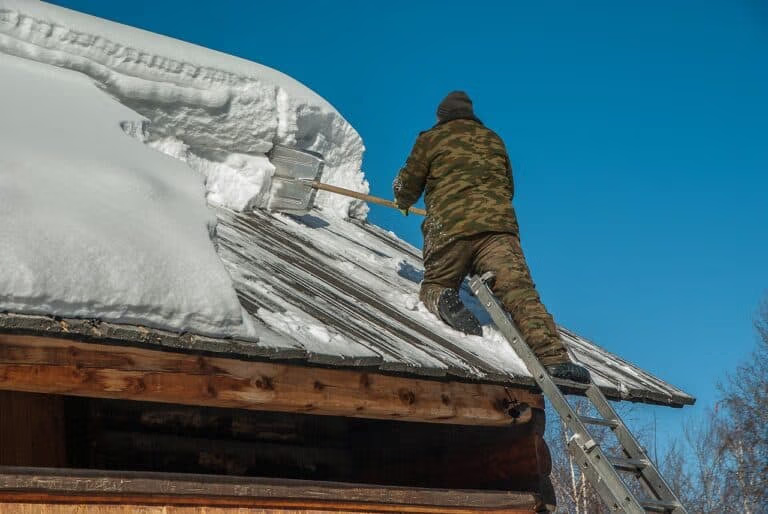How to Remove an Ice Dam 2021
If you were looking for information on how to remove an ice dam, you are in the perfect place for that! Ice dams can be safety hazards to people, stop proper drainage of snow and rainwater from the roof, and cause water to back up under your shingles, damaging your roofing materials, your roof deck, and even the inside of your home.
Sellers Roofing Company- New Brighton has been helping the residents of St. Paul and surrounding areas withice dam removal and control for over a decade, and in this post, we will tell you everything that you need to know to remove ice dams safely from your roof, plus give you some pro tips on how to stop them before they ever become a problem.
Read on…
Need Help with an Ice Dam Now?
Call us during normal business hours at651 703 2336 or click the button below to schedule a free estimate with one of our ice dam removal experts!

How to Remove an Ice Dam?
Effective Methods for Removing Ice Dams Safely
Having snow covering your roof and a line of sparkly icicles hanging down can be breathtaking in the winter… But something is going on under the surface of the snow that can cause serious problems and lead to very costly repairs if it’s not taken seriously.
Ice dams cost Minneapolis residents millions of dollars in damages each year, especially around St. Paul and the Macalester-Groveland and Highland Park neighborhoods, where some of the older homes reside that may lack proper insulation.
Ice dams are caused by a number of factors… In some cases a sunny winter day can melt the snow on your roof, starting the process of an ice dam forming, but in most cases, the problem lies inside the home. Ice dams occur when uneven temperatures on the roof’s surface cause the snow to melt and run down the roof’s surface to areas near the edge that are still below freezing, where it freezes again. and backs up to form a ridge of ice across the roof’s edge.
The majority of ice dams are caused by these two factors:
This next section will give you several different methods to remove ice dams, and inform you of which methods are the safest so that you can remove your ice dam like a pro when the time comes. We will also give you some tips on how to prevent ice dams from occurring so that you won’t have to deal with this problem winter after winter.
How to Remove an Ice Dam? – 5 Methods and Which Ones are the Safest
If your roof is has become a heavy ridge of ice that you are afraid may end up causing damages, these next sections will describe different ways that ice dams can be removed, and tell you reasons why each method is safe for you and your home or not.
Method #1 – Using a Mallet, Garden Rake, or Other Tools
Breaking an existing ice dam away chunks with a mallet, garden rake, or other tools can be dangerous. While it may seem like it would get the job done, it can damage parts of the roofing system and end up defeating the whole purpose.
If you attempt to use this method, be very careful! Breaking up an ice dam physically from a ladder, or the ground can result in large pieces of ice falling off the roof, causing injuries, damaging gutters, breaking windows, and damaging your landscaping below. Climbing on a snowy and icy roof is even more dangerous, and better left to professionals.
Method #2 – Using Calcium Chloride Products
The best way to use calcium chloride products to remove an ice dam is to fill long socks or pantyhose with the calcium chloride granules and then tie the ends closed with string or twine and placing them vertically over the dam every 3-4 feet around the roof. Position the tubes so that they hang over the edge a couple of inches… This will melt channels in the ice dam down towards the ground, allowing proper drainage of excess water from the roof.
You can get a 40-lb. bag of calcium chloride for about $10 that will fill approximately 10 to 12 tube socks. You may need 2 bags if your ice dam is around the perimeter of your home, maybe more for larger homes. Just don’t confuse calcium chloride products with rock salt, because rock salt can damage your roof and is dangerous to plants and animals.
Method #3 – Using Professional Ice Dam Steamers
Having professional roofer steam your ice dams away is the safest option. We have commercial steaming equipment that we use to get the job done safely and effectively. If you would like a free estimate just click any of the buttons on this page to schedule a good time to meet with one of our ice dam removal experts.
How to Prevent Ice Dams
Preventing ice dam formation will save you a ton of trouble and costly repairs. Making sure that your attic is properly ventilated and insulated, eliminating any heat sources in the attic,
sealing any interior airflow leaks into your attic are all ways that you can help prevent ice dams from forming in the first place.
Below you will find more detailed information on each preventative method:
Ensuring Proper Attic Ventilation
Intake vents in your attic should be installed under your roof eaves, and in the soffits, and exhaust vents should also be installed at the top of the roof. This pattern will allow warm air to exit through the vents at the top of your roof and cool air to be pulled in through the soffit vents, creating an even air exchange and decreasing the chances of uneven heating of the roof’s surface.
Sealing Off Air Exchange Between Attic and Rooms
Eliminating air exchange between the inside of your home and the attic involves sealing any gaps around vent pipes with insulating foam and rerouting bathroom and dryer vents if necessary to keep the warm air in your house, and the colder air in your attic.
Roof Snow Removal
You can also get a rake with an extension at your local Lowes or Home Depot for around $30-$35 that you can use to remove fresh snow from the edges, which will stop the buildup of excess snow and ice. Just rake the snow down from the roof three to four feet back after a snowfall when the snow is still soft and repeat whenever you see more snow accumulating.
Professionally Installed Deicing Systems
Professionally installed de-icing systems are available for ice dam prevention as well. Home improvement stores sell roof de-icing cables for $125 to $250 that mount directly on top of your shingles with clips that fasten over the eaves of the roof. They will be somewhat unsightly and visible from the ground in most cases, and they will become dislodged easily when raking your roof.
If you want to go with this option, it’s best to invest in a professionally installed deicing system that connects under the surface of your shingles. These types of systems should be installed at the same time that your roof is installed, and they are made to not mar the look of your roofline and last for years. Depending on how big your roof is, a professionally installed de-icing system could cost you an additional $2,000 to $4,000 added to your roofing cost.
How to Remove an Ice Dam? – Final Thoughts
Hopefully, this post has answered your question, “How to Remove an Ice Dam?” and given you the information you need to prevent ice dams before they occur. If you need a professional opinion, we have over a decade’s worth of experience helping residents of the greater Minneapolis area with ice dam removal and prevention, and one of our ice dam removal experts would love to come out and discuss your needs with you at your convenience! Just click the button below to have a Sellers Roofing team member call you back!
If you have enjoyed this post, or it has helped you solve a problem with ice dams today, please give us a share on social media!




